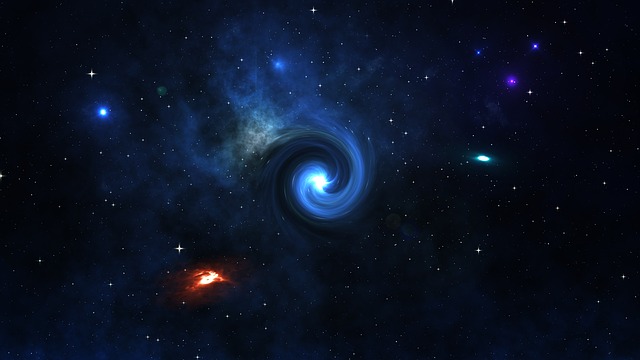
Recently, the world said its sentimental goodbye to Cassini.
The spacecraft had been orbiting Saturn for 13 years, spending two decades of its life in space.
Cassini has helped mankind to unravel quite a number of mysteries about Saturn, the so-called jewel of the solar system. It has also made quite a number of important discoveries!
Now, we know that Saturn has more than 50 moons with Titan having a resemblance to Earth with its many lakes and seas. However, these lakes are not filled with water but liquid methane and ethane.
Enceladus, Saturn’s 6th largest moon, on the other hand, has an ocean beneath its cold surface which spews water and ice particles at a jet speed of 800 miles per hour.
Cassini has uncovered much more data than what the National Aeronautics and Space Administration (NASA) and the rest of us expected about Saturn-the second largest planet in our solar system, and the cosmos. The mission has also provided clues as to where life forms might have existed apart from Earth.
It’s not surprising that so many people felt a degree of heartache when it was time to let go of this historic spacecraft.
Another spacecraft that has rendered extraordinary services to mankind was the Planck mission, launched in May 2009 and operated by the European Space Agency in collaboration with NASA.
Using a wide range of far-infrared wavelengths, the Planck satellite was able to create a very detailed map of the universe’s oldest light called cosmic microwave background (CMB) with the highest accuracy. World experts believe that knowledge about ancient radiation could provide us with answers to long-baffling questions such as cosmic origin and evolution.
For four years, the world waited for Planck’s completion of its mission.
Finally, in 2013, data from the Planck mission got released. And based on that information, the Planck map helped establish vital information about the universe’s expansion rate and the mysterious dark energy and dark matter, over which scientists have been debating for years. The Planck map also showed that, “the newly estimated expansion rate of the universe, known as Hubble’s constant, is 67.15 plus or minus 1.2 kilometers/second/megaparsec. A megaparsec is roughly 3 million light-years. This is less than prior estimates derived from space telescopes, such as NASA’s Spitzer and Hubble, using a different technique. The new estimate of dark matter content in the universe is 26.8 percent, up from 24 percent, while dark energy falls to 68.3 percent, down from 71.4 percent. Normal matter now is 4.9 percent, up from 4.6 percent.”
The Planck mission was able to establishe the age of the universe at 3.8 billion years old, 100 million years older than what was previously estimated.
Discoveries about CMB, dark energy, and dark matter have so far supported the origin of the universe based on the Big Bang theory. However, prior to the Planck mission, there was another controversy that rocked the world of astronomy.
A research team of astronomers claimed in early 2013 that the ancient star named ‘Methuselah’ was about 16 billion years old, making it older than the universe.
This prompted Howard Bond, a professor in the Astronomy and Astrophysics department at the University of Pennsylvania and a team of fellow astronomers to verify the facts. Using NASA’s Hubble Space Telescope, they verified the age of the said ancient star.
According to the authors, and as published in the journal Solar and Stellar Astrophysics, “Employing modern theoretical isochrones, which include effects of helium diffusion, revised nuclear reaction rates, and enhanced oxygen abundance, we use the precise distance to infer an age of 14.46 +/- 0.31 Gyr. The quoted error includes only the uncertainty in the parallax, and is for adopted surface oxygen and iron abundances of [O/H] = -1.67 and [Fe/H] = -2.40. Uncertainties in the stellar parameters and chemical composition, especially the oxygen content, now contribute more to the error budget for the age of HD 140283 than does its distance, increasing the total uncertainty to about +/-0.8 Gyr. Within the errors, the age of HD 140283 does not conflict with the age of the Universe, 13.77 +/- 0.06 Gyr, based on the microwave background and Hubble constant, but it must have formed soon after the big bang.”
This means that the Methuselah star, although it is the oldest known star, is younger than the universe.
Yes, there is still so much to know and learn about the cosmos. NASA is even considering sending missions again to Saturn, aside from its plan to develop the capabilities needed to send humans to an asteroid by 2025 and Mars in the 2030s. Obviously, the Planck and Cassini missions are only the beginning. Mankind will keep on searching the space until we find the answers we’ve been looking for. Especially the answer to our most important question of all: is there another life out there?
Disclaimer: This page contains affiliate links. If you choose to make a purchase after clicking a link, we may receive a commission at no additional cost to you. Thank you for your support!




Important typo! Age of the universe is estimated at 13.8 billion years, not, “The Planck mission was able to establishe the age of the universe at 3.8 billion years old, 100 million years older than what was previously estimated.”